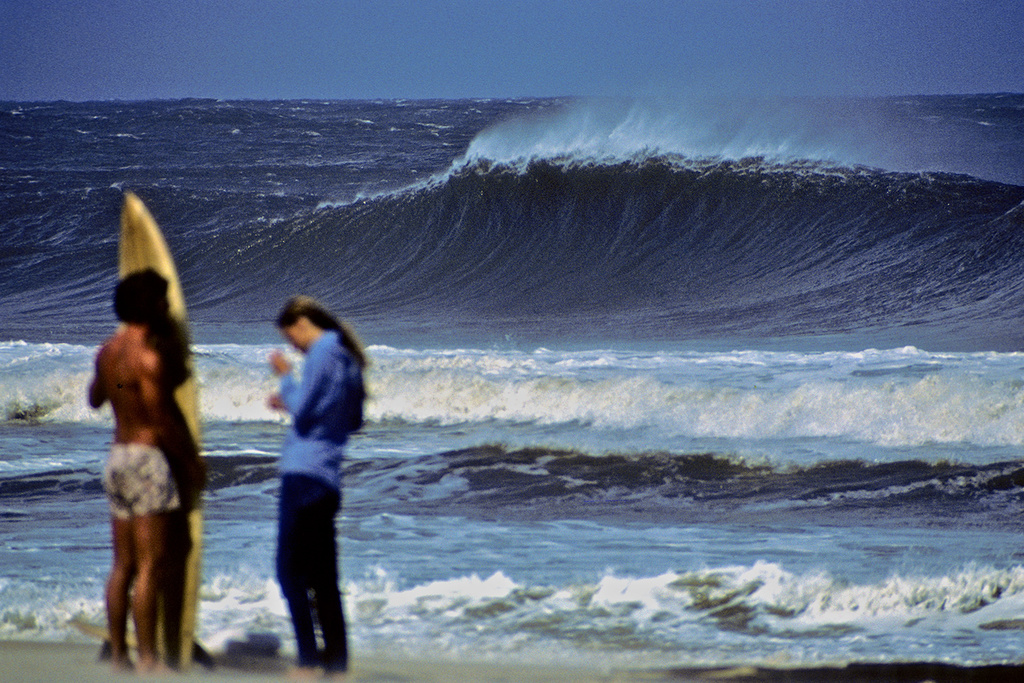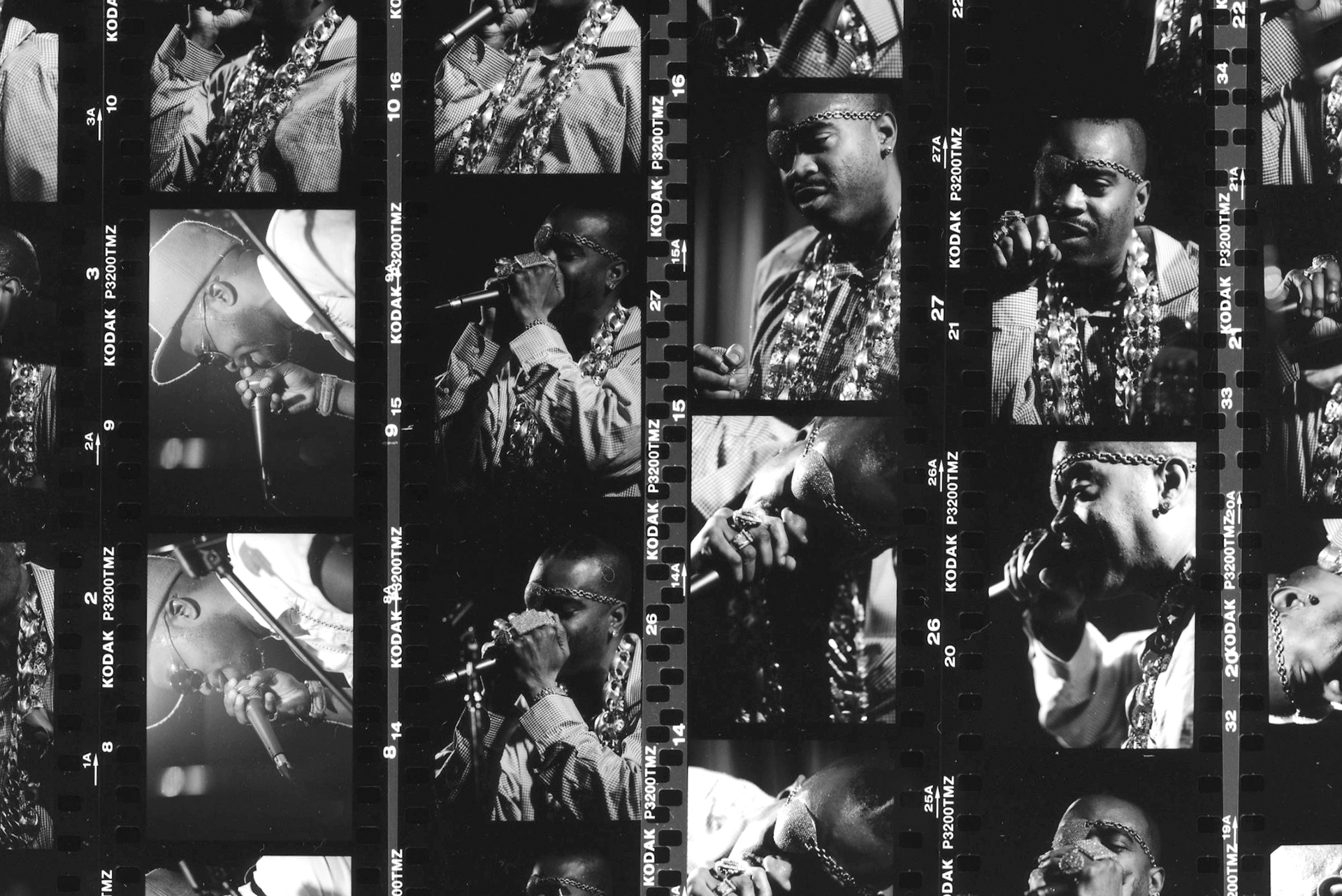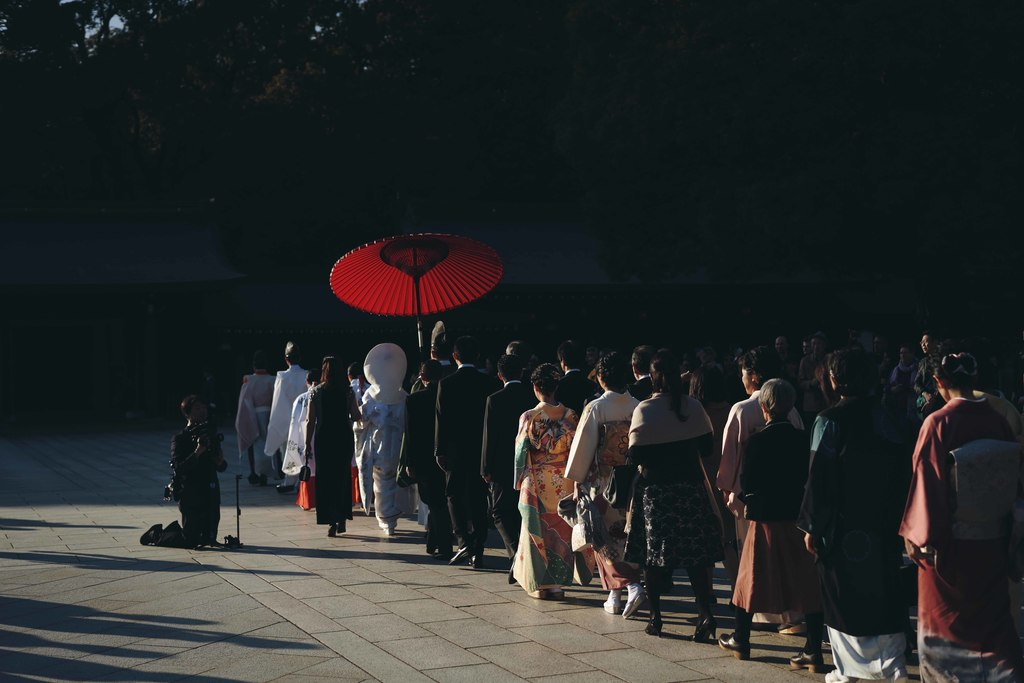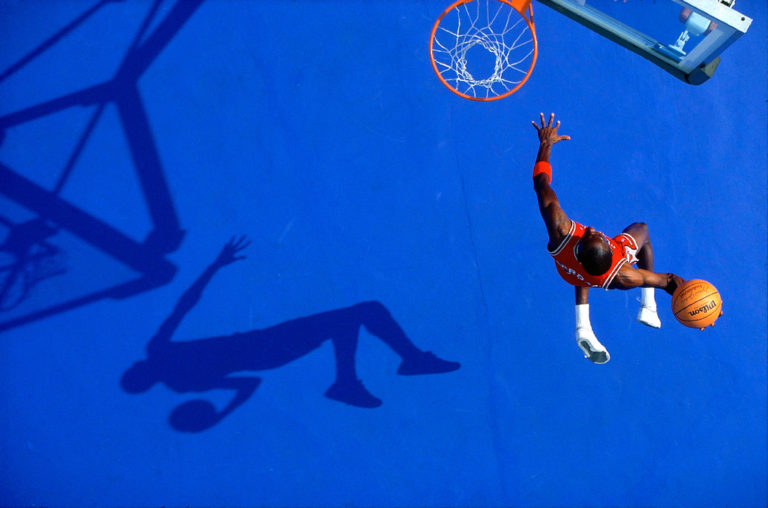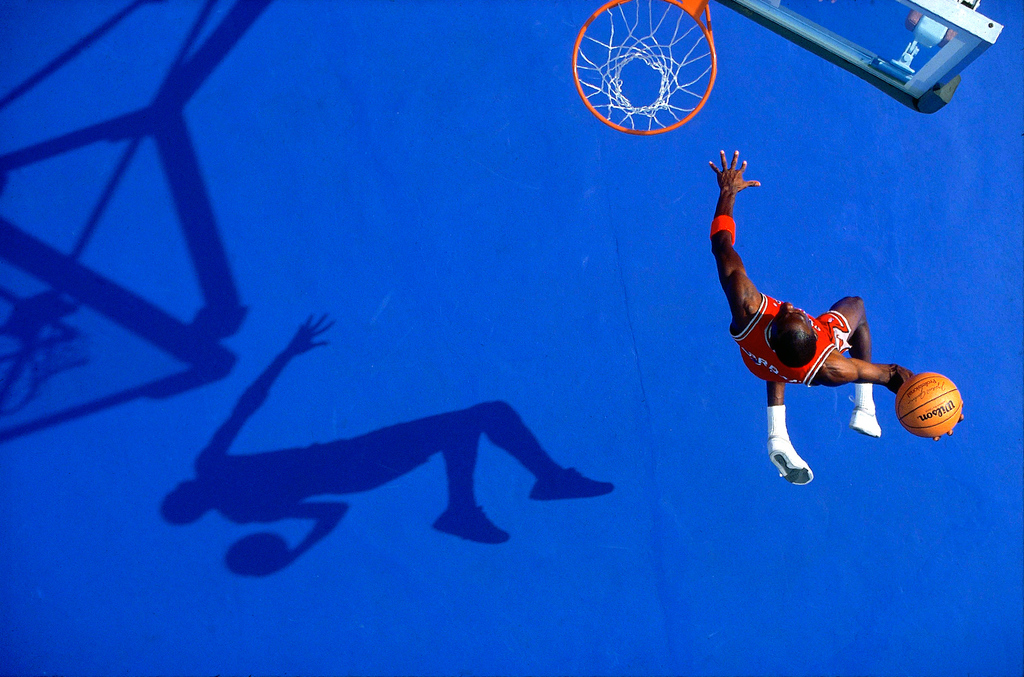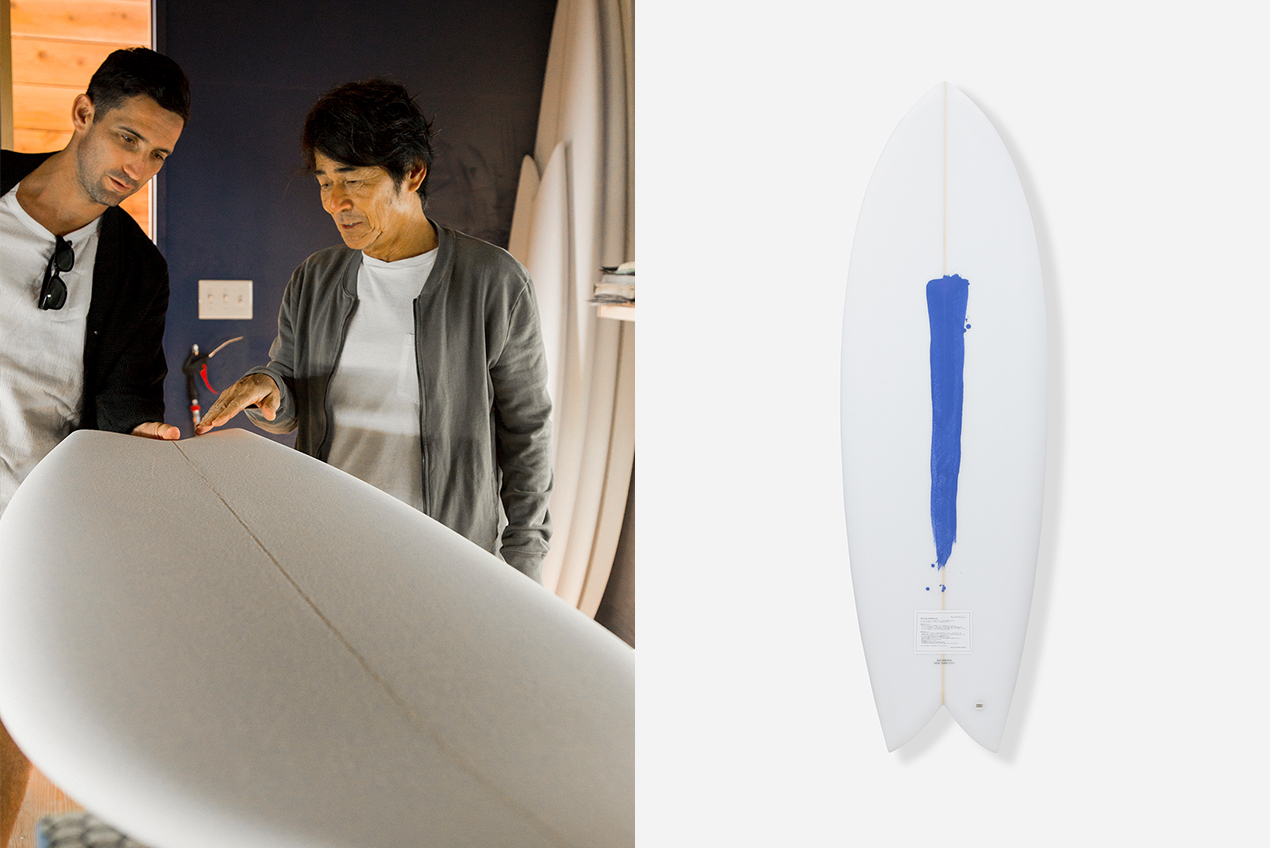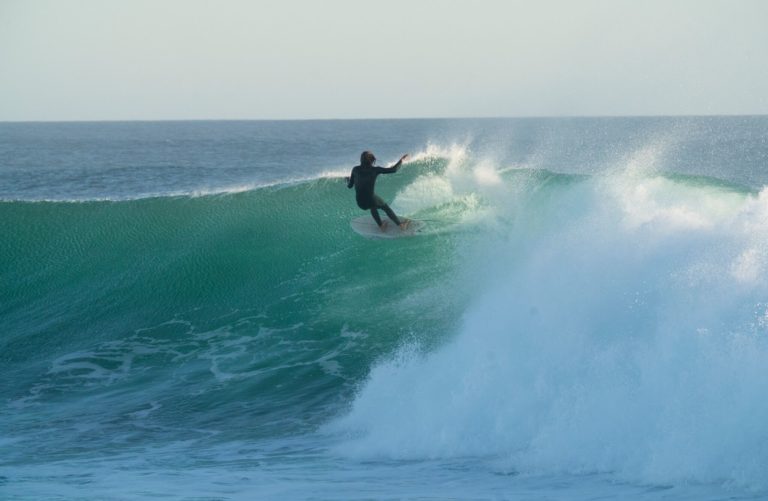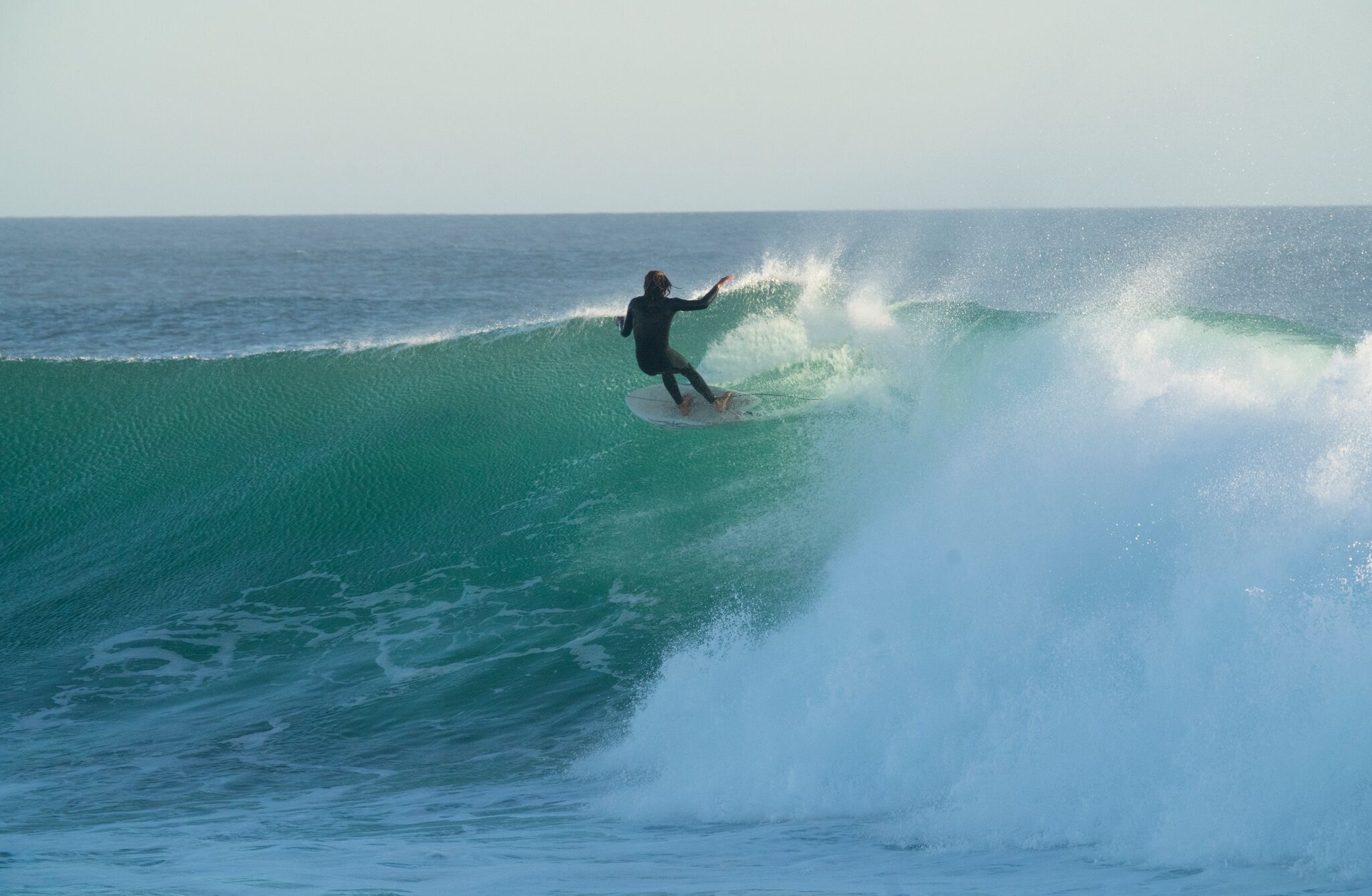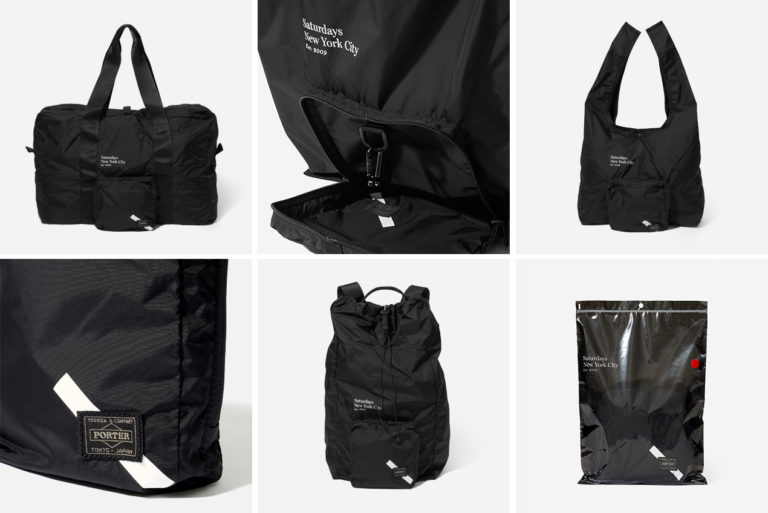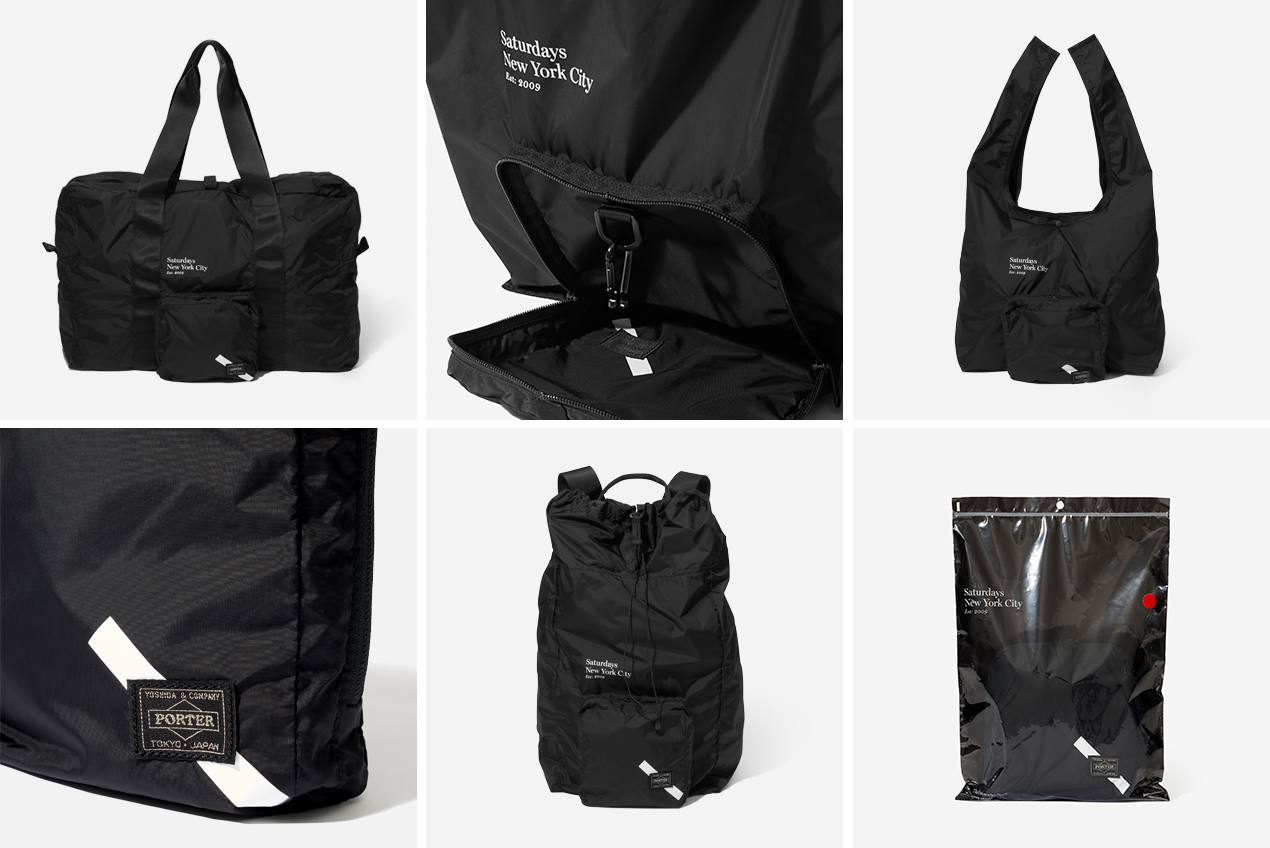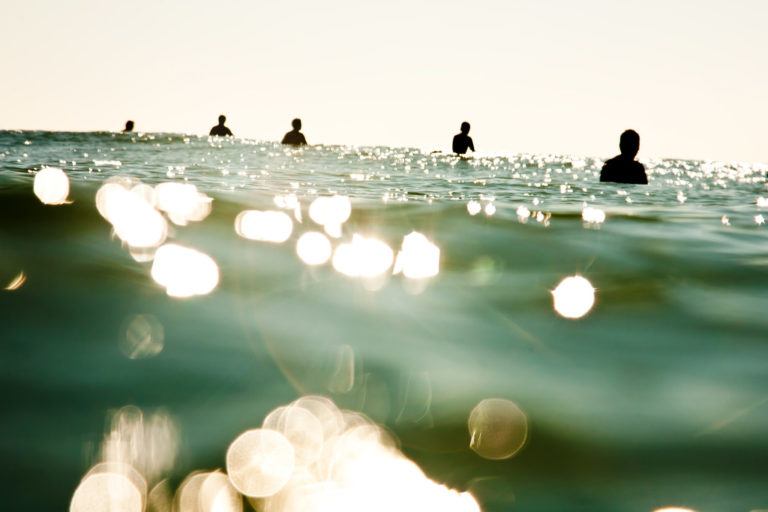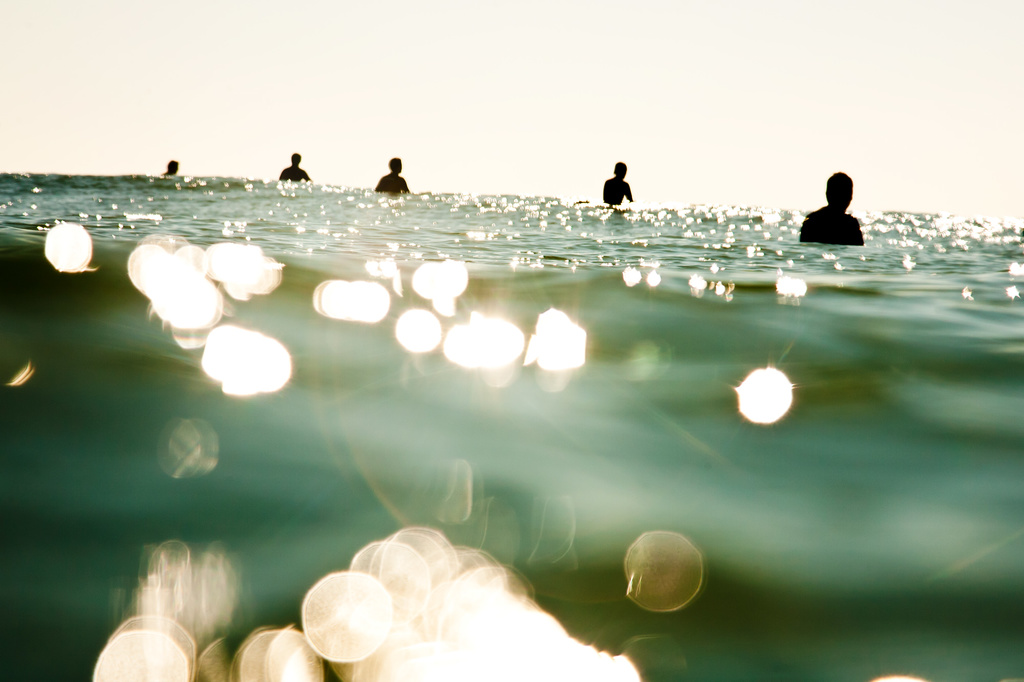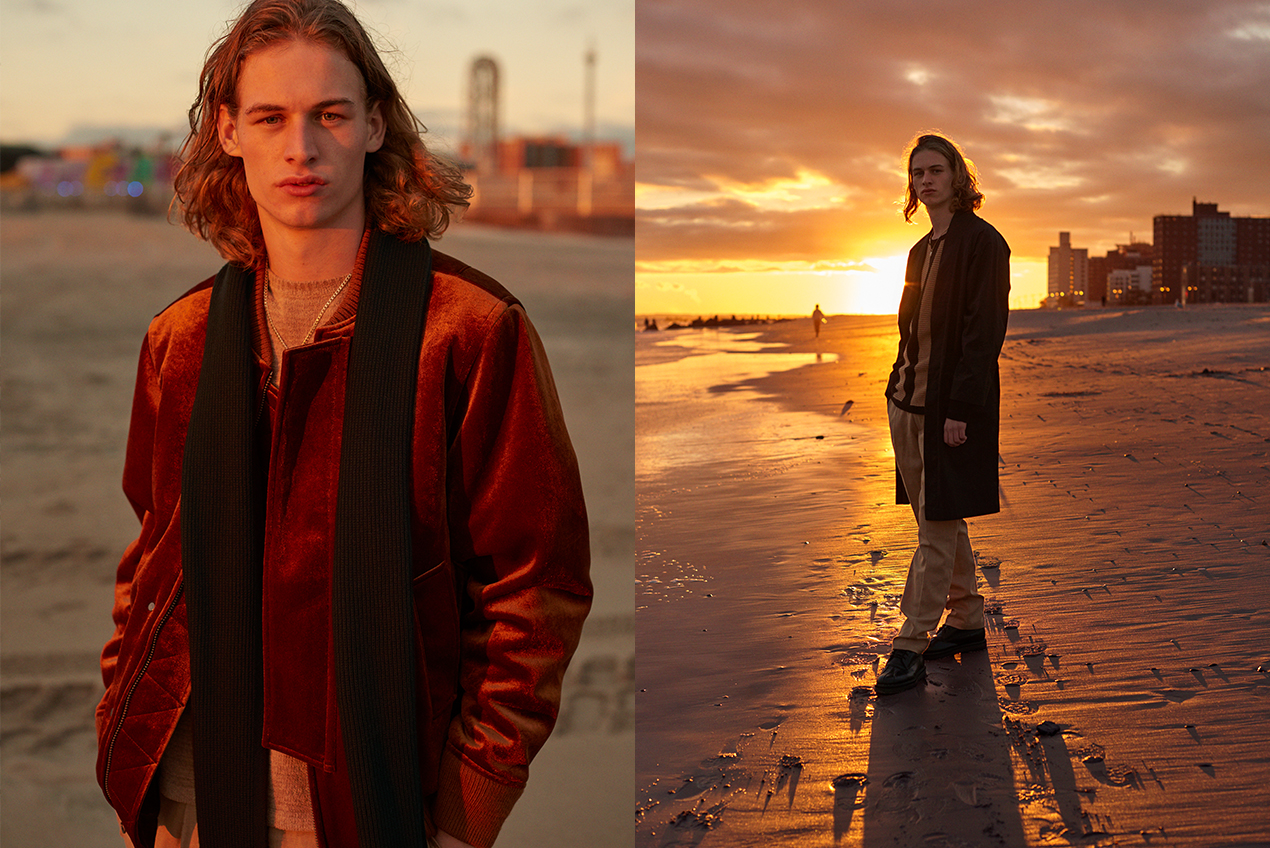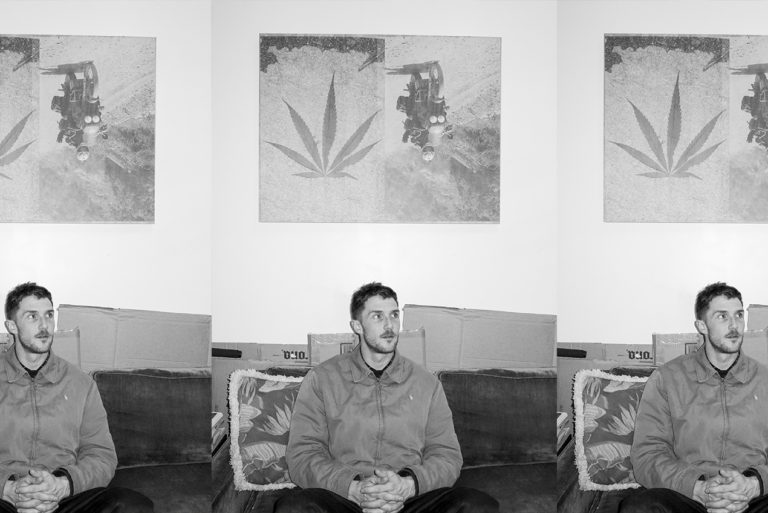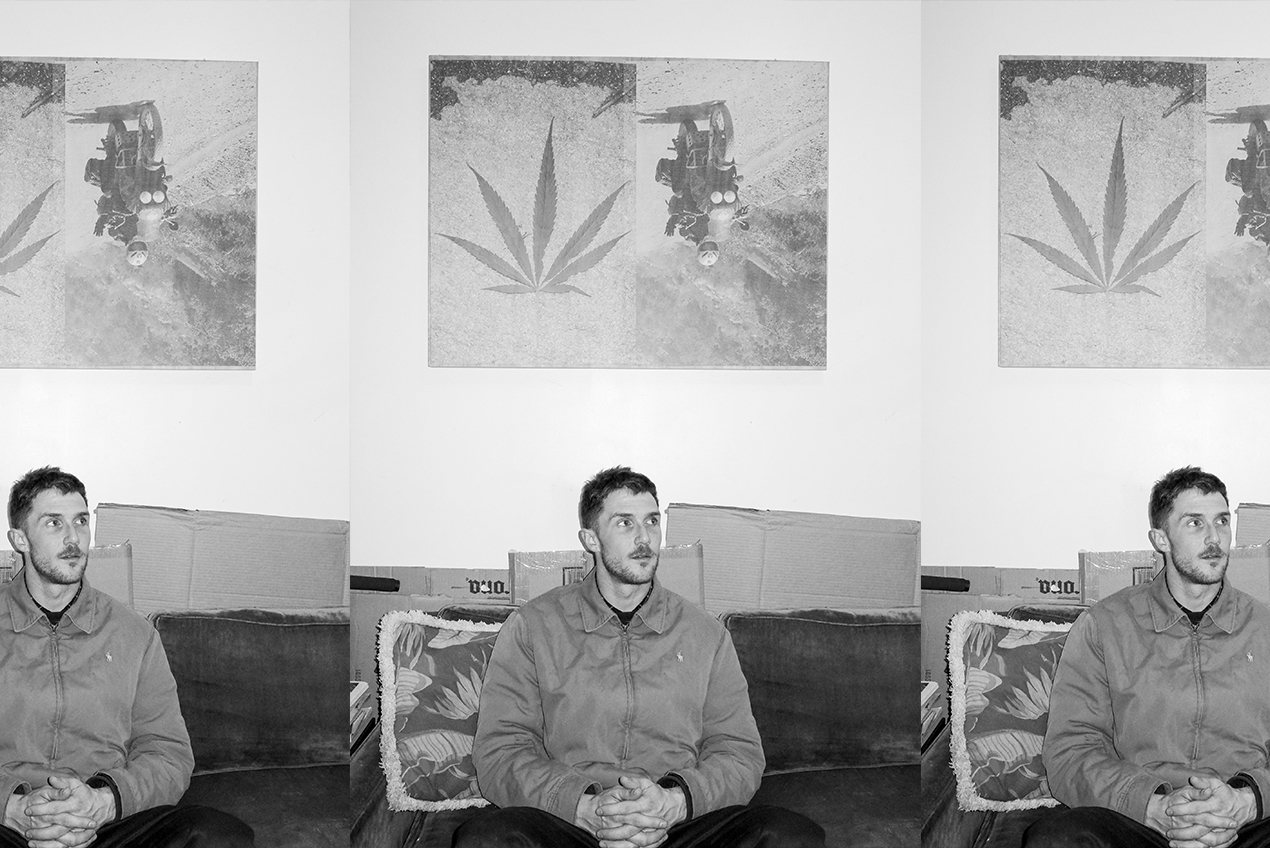zak bush: I’m curious to talk to you guys about surfing on the East Coast back in the day. How did you first get started?
tom dugan: Surfing came into my life through surf magazines. I moved to Long Island from Ohio in the summer of 1965 and, for some reason, I had already been looking at all the surf magazines. A neighbor asked me if I had ever been to the ocean, and I told him that I hadn’t, so we hitchhiked to the beach and I immediately knew that I wanted to start surfing. That summer, we’d go to a beach called Atlantique Beach on Fire Island and rent surfboards for five bucks from the lifeguards. The waves were very small for summertime in New York, and it was 1965, so the boards were 9’2”, 9’6”. I’d drag the board out to the ocean, put the board down in the water, get on my knees, paddle out, turn the board around, and then get back up on my knees and wait. The first year I surfed, I just went straight to the beach—I didn’t know you were supposed to turn. Then, of course, the shortboards came in a few years later. I basically got the surf bug and just kept surfing, surfing, surfing.
richard meseroll: I grew up in Point Pleasant Beach, which is a little fishing town right smack dab on the Manasquan River. It was kind of a typical mid-‘60s, Beach Boys meets Summer of Love meets Psychedelic Surfer coming of age for me. I started surfing when I was 14. My cousin had a longboard and we grew up two blocks from the beach. I jumped in with him, and I knew from the first time I surfed that I was going to be a lifer. I had tunnel vision for surfing. Everything else just wasn’t for me—Pop Warner, Little League, other team sports. I graduated high school in 1970 and, much to the chagrin of my parents, I didn’t want to go to college. I just wanted to work, make money, and get the hell out of New Jersey in the wintertime.
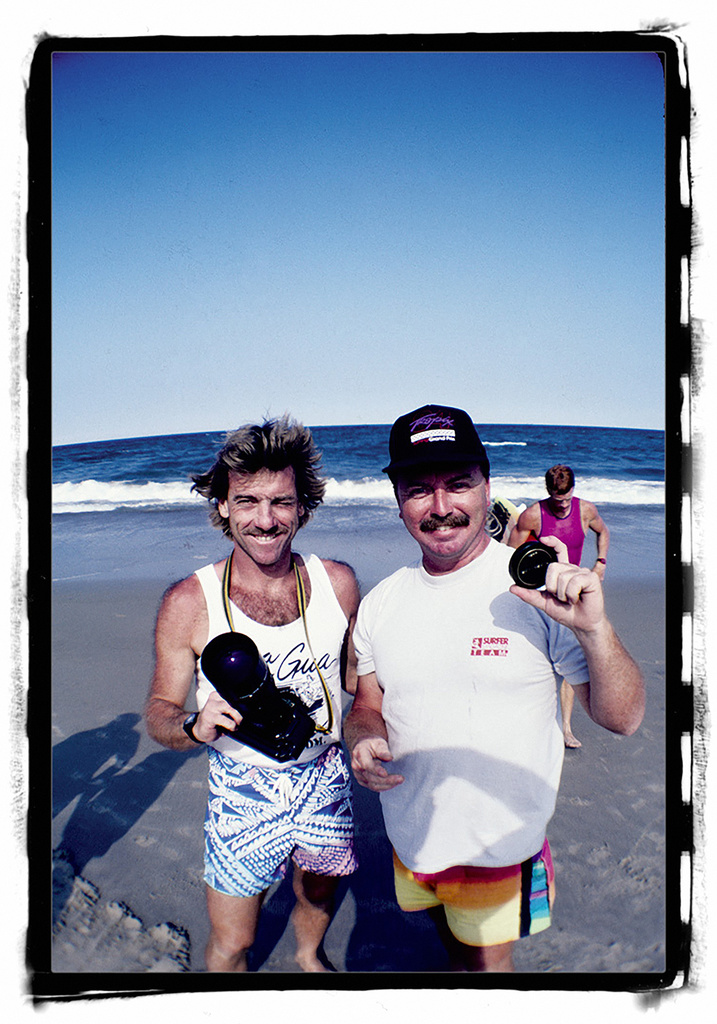
Richard Meseroll & Tom Dugan

Matt Kechele, Hurricane Sandy, Florida.
Photo: Mez
zb: During that developmental time when you both fell in love with surfing and got involved with that culture, were you guys getting into photography at the same time? Or was that something that came later?
td: For me, it was way later. I used to do a little bit of photography with point-and-shoot cameras back in the day, but I really didn’t start until 1980. I picked up a camera and started using it, and then I bought a bigger lens and I was like, “I can get the shots that these guys get in the magazines.” That was my thing, to try and get a photo like in the magazines. I worked with a company called Sundek, and my first photo was for an ad with Bob Lohmann, who was mega at the time. I did that for $250 and I thought it was the best thing in the world.
rm: I was kind of the same as Tom. After graduating high school, I ended up doing two winters of surf trips in the Caribbean and I decided to get a camera, basically to capture what I was experiencing. I started with a camera called the Hanimax Praktica, which I’d drag along with me everywhere. One day, I was shooting a buddy of mine surfing in Bayhead, and a guy who lived there started talking to me and said, “Hey, my dad owns a surfing magazine.” It was called Surfing magazine and it was owned by Lopez Publications—no relation to Gerry Lopez. This guy ended up taking some of my photos up to the city, and I ended up getting a photo published. I got a check for like $10 and I had this epiphany where I thought, “Okay, I’m going to try and make money doing this.”
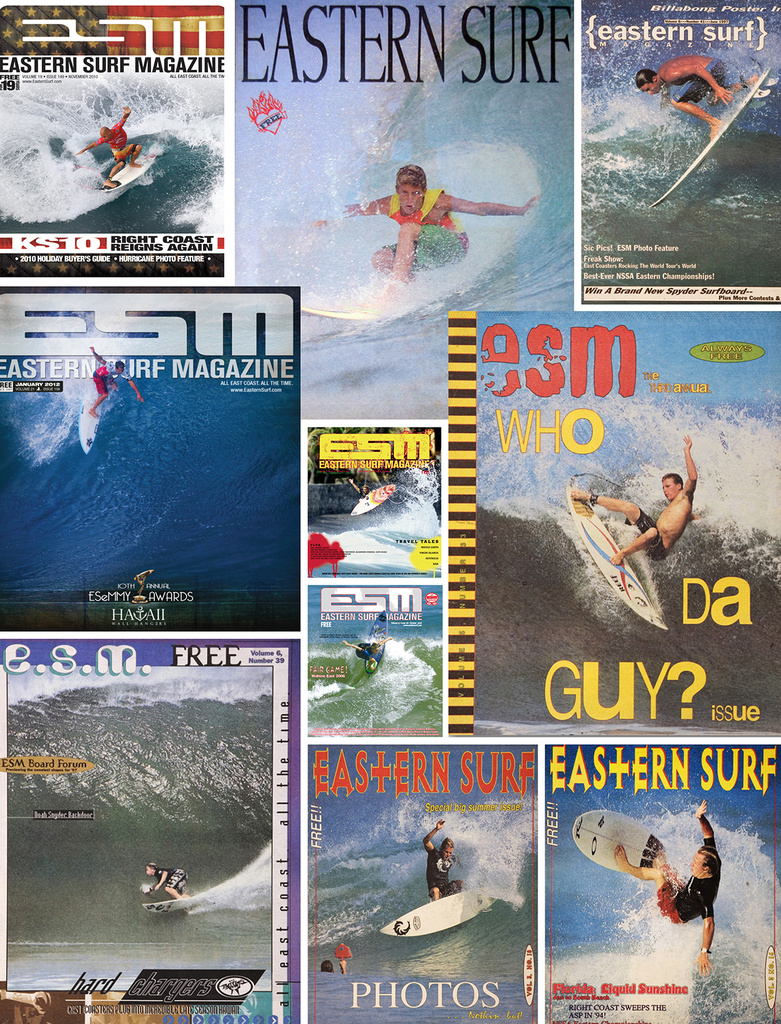
The East Coast thing was always pretty tight-knit back then. It had this huge sense of camaraderie. These guys and I just wanted to get a great shot, and I was stoked when they got a great shot.
zb: As far as regional surf documentation goes, if you go to California, or you go to Hawaii, or you go to Australia, there’s such a huge catalogue of images that has been kept and preserved. But with East Coast surfing, there’s you guys and then there’s not much else. When did you guys meet, and when did the idea for ESM come to you?
td: I first spent time with Mez while I was traveling the East Coast with Bob Lohmann. We needed a place to crash, and Bob knew Mez from surf trips, so we stayed at Mez’s house whenever we were in New Jersey. From there, we became friends and would see each other and hang out. Later on, when Mez moved down here to Florida, we became better friends.
rm: I was coming down to Florida so much. New Jersey isn’t really where the action was back then. I mean, there was a couple of guys—Scottie Dorn, Charlie King—but it was all coming down here. Sebastian Inlet was the epicenter of East Coast surfing, and Brevard County was the epicenter of the East Coast industry, so it made sense to move here. I moved in with Charlie Kuhn and a mutual friend of ours. For Tom and I, the relationship kind of built organically. We bumped into each other at contests and partied quite a bit. The East Coast thing was always pretty tight-knit back then. It had this huge sense of camaraderie. These guys and I just wanted to get a great shot, and I was stoked when they got a great shot.
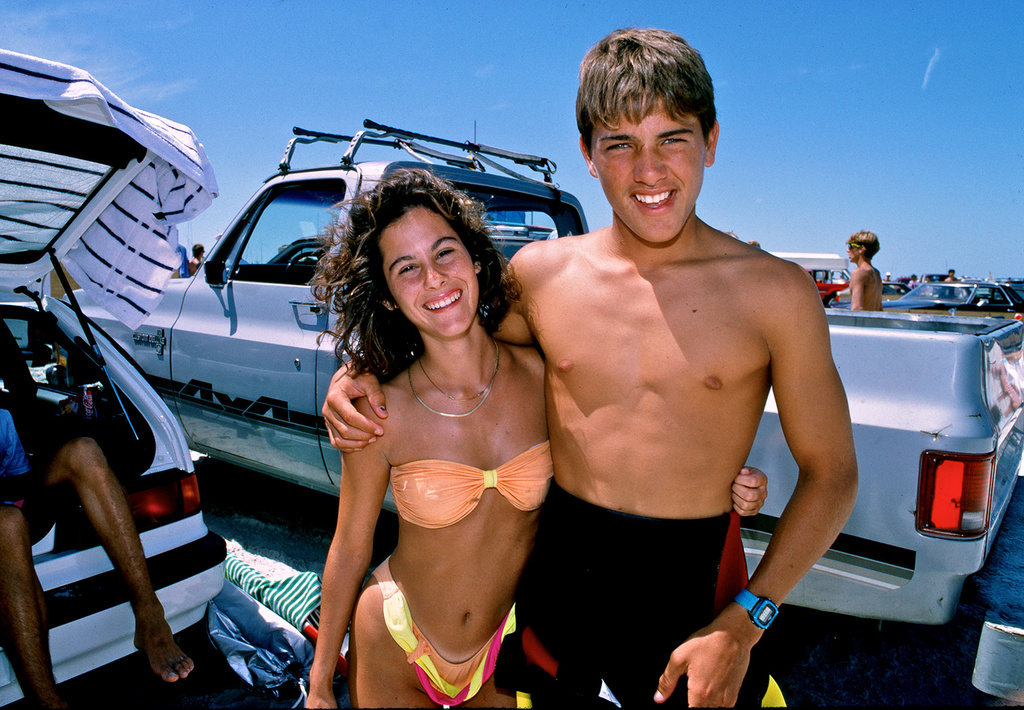


zb: So how did the magazine grow out of this surfing scene on the East Coast?
rm: We needed jobs.
td: I had this job working at a photo lab that did a lot of prints for the Space Shuttle.
zb: For NASA?
td: Yeah. Back then I’d have to drive from Melbourne up to the Cape, which is about a 45-minute drive. As soon as the prints were done, I’d have to get up there and deliver them to the Cape so they could use them for press releases. But then they cut back on the Shuttle Program, and the photo lab I was working for lost its contract. I was out of a job.
rm: This was right when there was a pretty heavy economic downturn in the country. There was a pretty decent recession in the early ‘90s. I hadn’t had a raise in a couple years, so I asked for a raise, and my boss, Steve Hawk, says, “As matter of a fact, I have to cut your retainer.” So I ended up coming back to Florida and started talking to Tom about starting our own magazine. We never thought that the West Coast magazines gave us enough page space and we knew that people on the East Coast were hungry for surf magazines. We joined forces and we knew all the right people, so we decided, “Let’s go for it, man. Let’s start a magazine in the middle of a recession.”
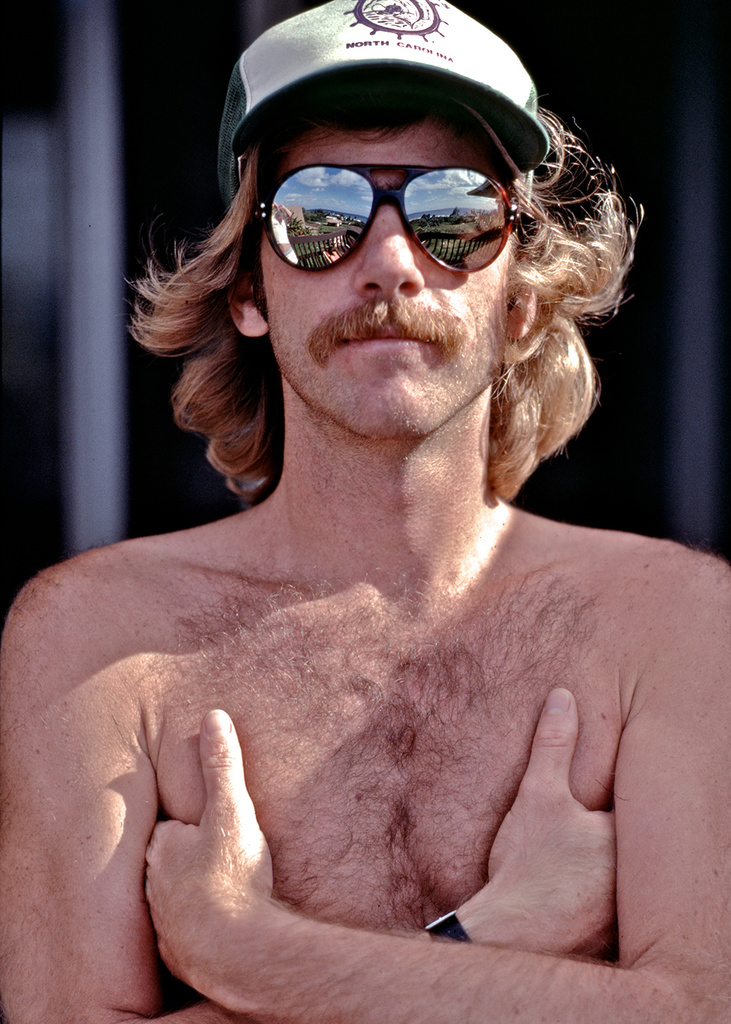
Mez in Hawaii, 1978.
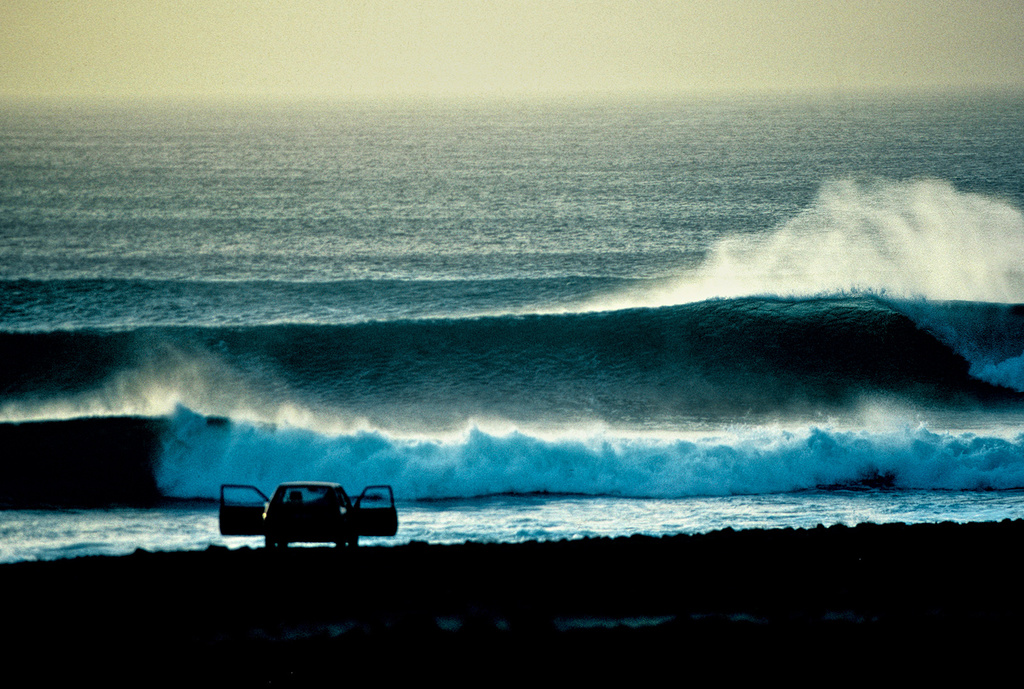
zb: You guys have been at this for a long time, and ESM has really been the staple magazine for the East Coast.
td: We’re in our 23rd year right now. Mez and I are what we call “lifers.” It’s funny, there are photographers who get into it, and they go out and buy $30,000 worth of equipment, but then two years later, they turn around and sell all of it. For us, it’s a passion and it’s given us a great outlet to do the things we want to do—the travel, the girls, the essays. Last year, Mez spearheaded our “Faces of Foam Guide,” which I think is one of the best things we’ve ever done. We tried to cover all the shapers up and down the East Coast.
zb: I remember seeing that.
td: That was a huge task—coordinating the times and places, finding them, all that.
zb: Has the magazine changed a lot over the years?
td: It has. From the start until today, it’s basically night and day. But I think the constant has always been the talented people that we’ve had here at the magazine. Our first editor, Matt Walker, has always been here right up until this day. And you always need good photographers. Without the visuals, you don’t have a magazine. Being two photographers ourselves, a lot of the other photographers look up to us and they want to be part of it.
rm: The digital revolution was crazy, man. If you were to tell me that all of this was going to happen when we started the magazine—that we were going to have the technology we have in our hands today—I would’ve said that you were tripping. Digital has impacted our business in so many ways. Mostly positive, I think.
zb: You guys basically opened the door for almost all of the young photographers on this coast by giving them a place to have their photos seen.

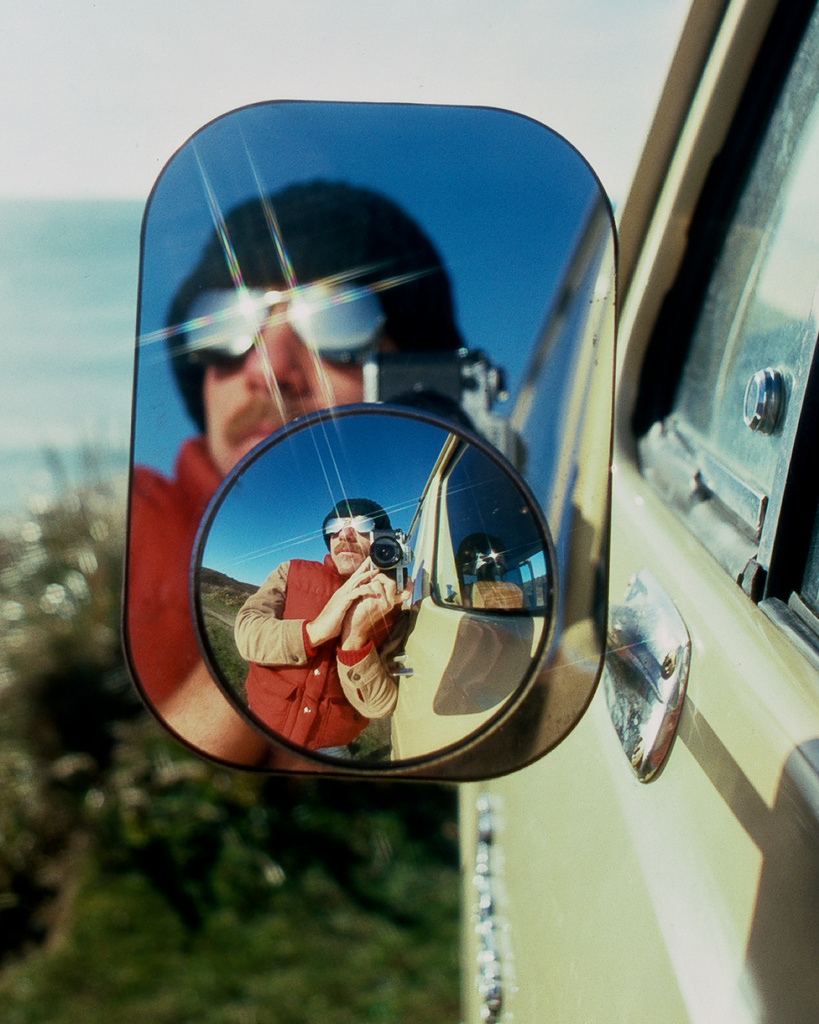
rm: Not just photographers either, man. It’s top-to-bottom. Our business manager, who is extremely talented, used to work for Sea World. Now she works for us. We’ve been lucky, man.
zb: I think you guys have done the same for surfers, as well. You give shout outs to the young guys and make space for their surfing to be showcased.
rm: It’s always been a two-way street. A lot of these people know people and they always encourage people to get with our thing here.
zb: Since you started ESM, the perception of East Coast surfing has changed a lot. I’m still young, but the people I talk to here used to go traveling around the world, and when they talked to guys in the lineups in California, or Hawaii, or Indonesia, no one had any idea how good the waves were over here on the East Coast. That perception seems to be changing quite drastically. What do you think are the regions on the East Coast that have pushed that change?
td: Sebastian Inlet would be the start of all that. It started way back in the ‘60s. Cocoa Beach had Gary Propper, Claude Codgen, Mike Tabeling, Jeff Crawford, Greg Lore, and it just went on and on. As the years went on, shortboards came in, and then just better and better surfers. We had Matt Kechele, Charlie Kuhn, John Holeman, Richie Rudolph—the names go on and on—Louis Graves, Jackie Grayson, Jeff Klugel, who is now a judge on the World Tour. Now you got New Yorkers like Leif Engstroms doing crazy stuff, Balaram Stack, Will Skudin riding the big waves. Everything is changing, and I think the magazine has helped put these people’s names and images out there. You see these little surfers start out, and if they really stick to it and get better, they can get seen around the world in our magazine.
So many people that we knew personally, or from taking photos, just couldn’t cut it—a lot of drug casualties, a lot of guys who could’ve gone somewhere and just decided that that’s not where they wanted to go.
rm: This whole thing in Carolina, New Jersey, and New York has really emerged with photographers documenting the scene and through the digital world. Man, you see photos of amazing waves over and over again in Bayhead–Sam Hammer and Mike Gleason plugged in—or, the Outer Banks—Brett Barley, Ben Bourgeois, and a bunch of other guys just killing it. Seeing a couple of photos in Surfer, or Surfing, doesn’t really give you the whole picture. But when all these photos of those three states started emerging on social media, and there are swells every time, you just couldn’t deny the talent and the waves anymore. Back in the day, I’d be traveling and people would go, “Do you have waves in New Jersey?” I’d say, “Dude, you should see the waves I grew up on, the waves I got my ass kicked on. Yeah, we have waves. Don’t worry about it.”
zb: On the good days, you can get better beach breaks here than anywhere else in North America.
rm: It’s as good as anywhere else in the world for that type of wave, period, end of discussion. Jersey, Long Island, all of those mid-Atlantic states, they’re just amazing. And now, with social media, it’s all out there for people to see.
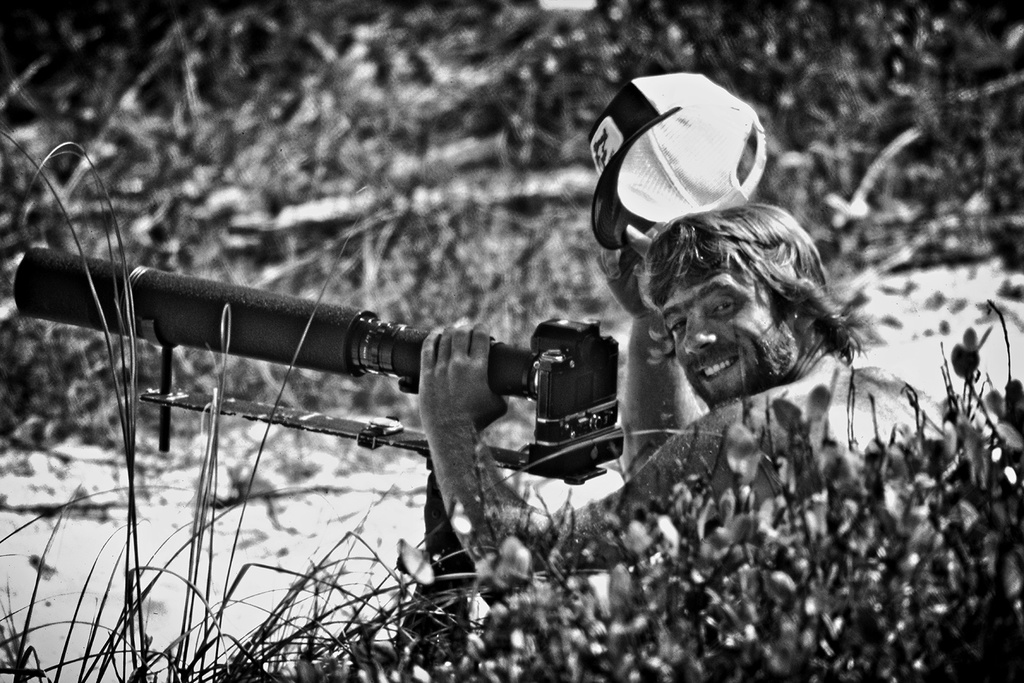
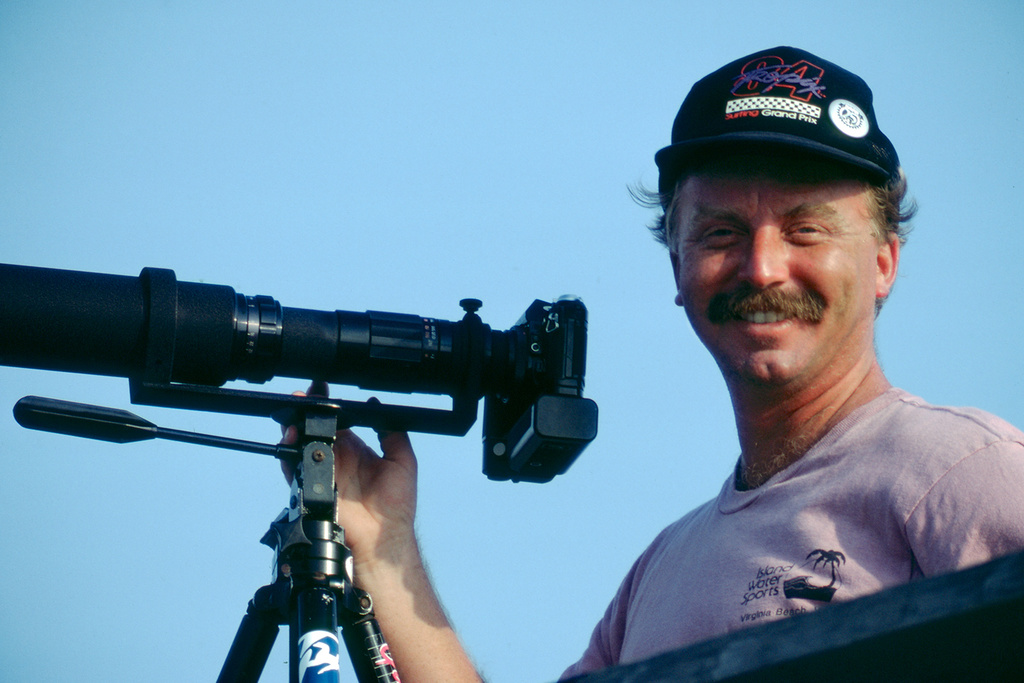
zb: Over the years, you’ve seen a lot of young, East Coast photographers and surfers coming up. You guys saw Kelly at a really young age, you saw the Hobgoods at a really young age, and I’ve seen great photos that both of you guys have taken of those guys when they were kids. Have there been any where you guys have thought, “This kid’s good, but maybe he’s not going to make it?” Or has the opposite ever happened, where you think a kid is going to become the next great surfer, and then he ends up choosing a different path in life?
rm: Personally, I’ve seen way more implosions than I care to think about. The cream usually rises to the top. With the Hobgoods, and with Kelly, we just knew that they were going places. But there’s been so many sad cases, especially in Florida. So many people that we knew personally, or from taking photos, just couldn’t cut it—a lot of drug casualties, a lot of guys who could’ve gone somewhere and just decided that that’s not where they wanted to go. And trust me, I’m no angel, but I was sitting behind a camera, so I could get away with it.
td: As far as the talent coming up, I don’t think we’ve missed one. If they’re coming up, we know about it and we’re usually shooting them at a very young age. There’s a photo essay we’ve done with all these pros as kids, when they were literally ten, eleven, twelve years old. They were little kids and now they’re getting to be surf stars. We always see them coming up and we haven’t missed one. There’s some we were hoping for, and, like Mez said, they fall to the wayside. It’s an old story, but it still happens to this day, although it’s not as bad as it was ten years ago. In the past five to ten years, these kids have been becoming athletes. They’re dedicated, they want to do it, and they train. There’s peer pressure, and the peer pressure is to be a really good surfer.
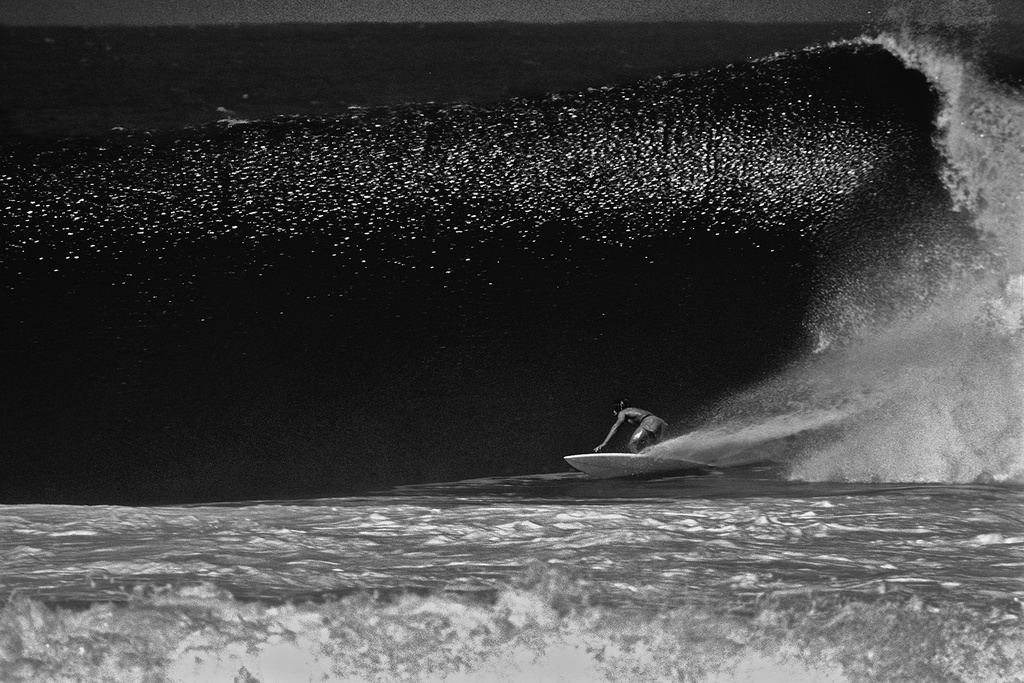
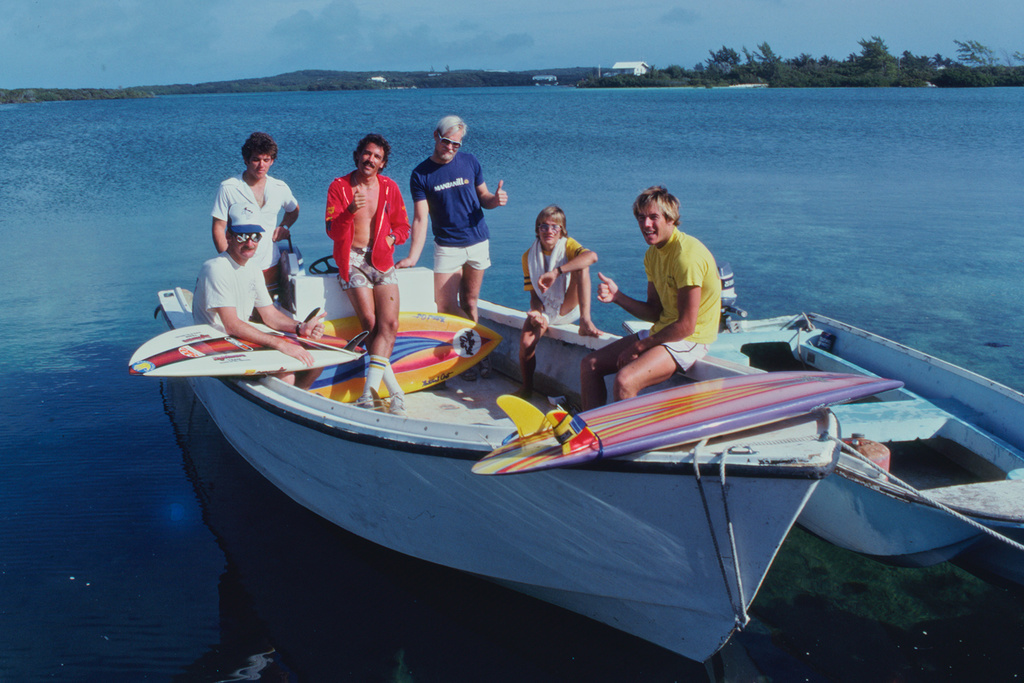
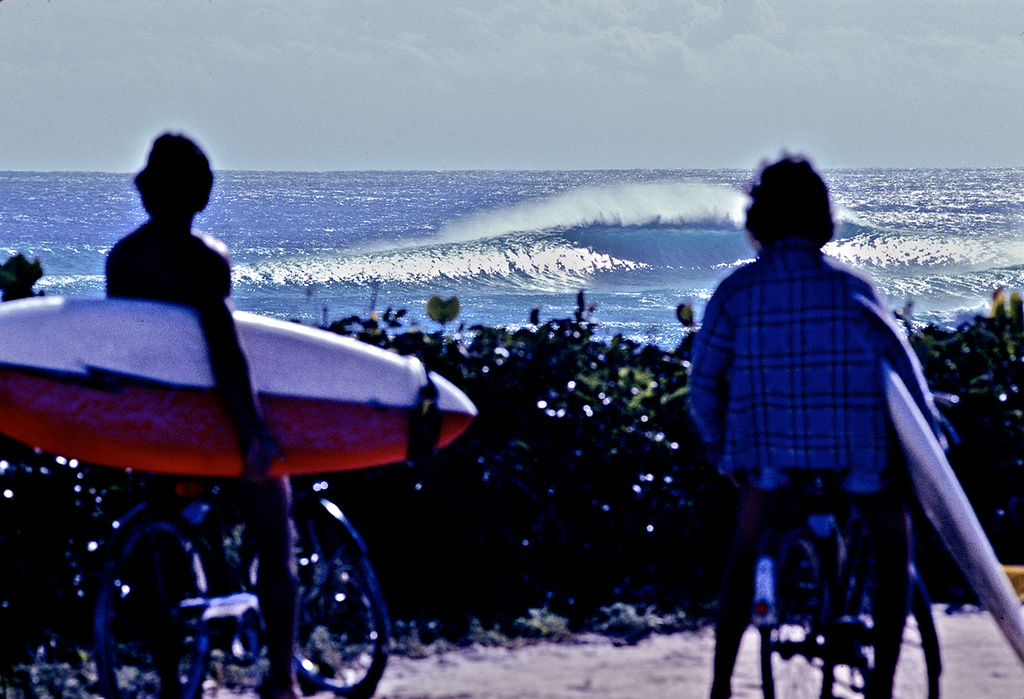
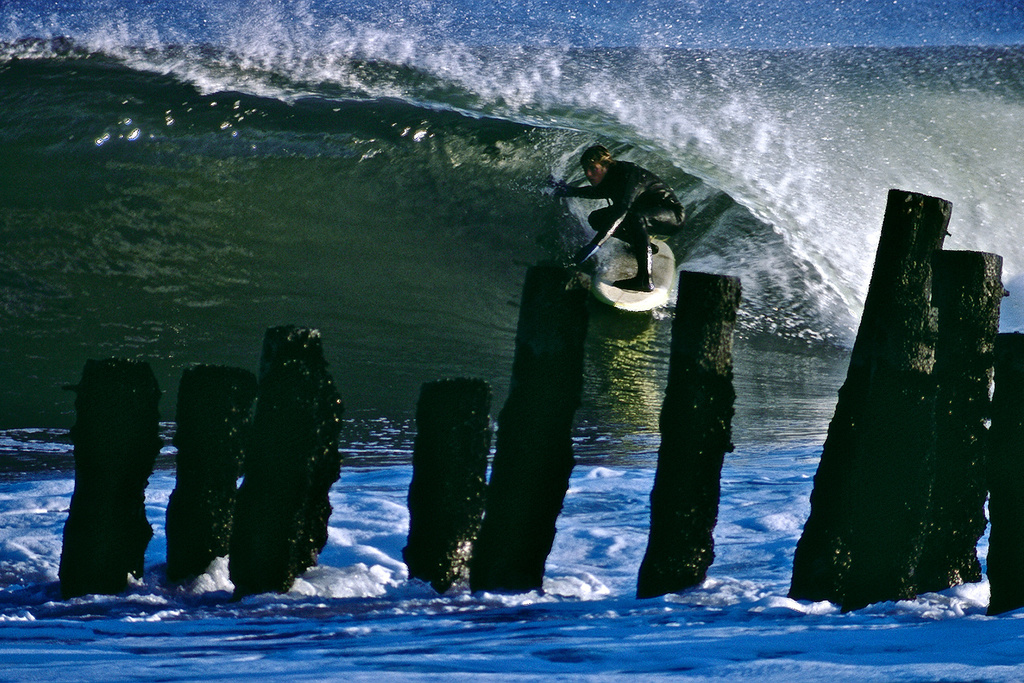
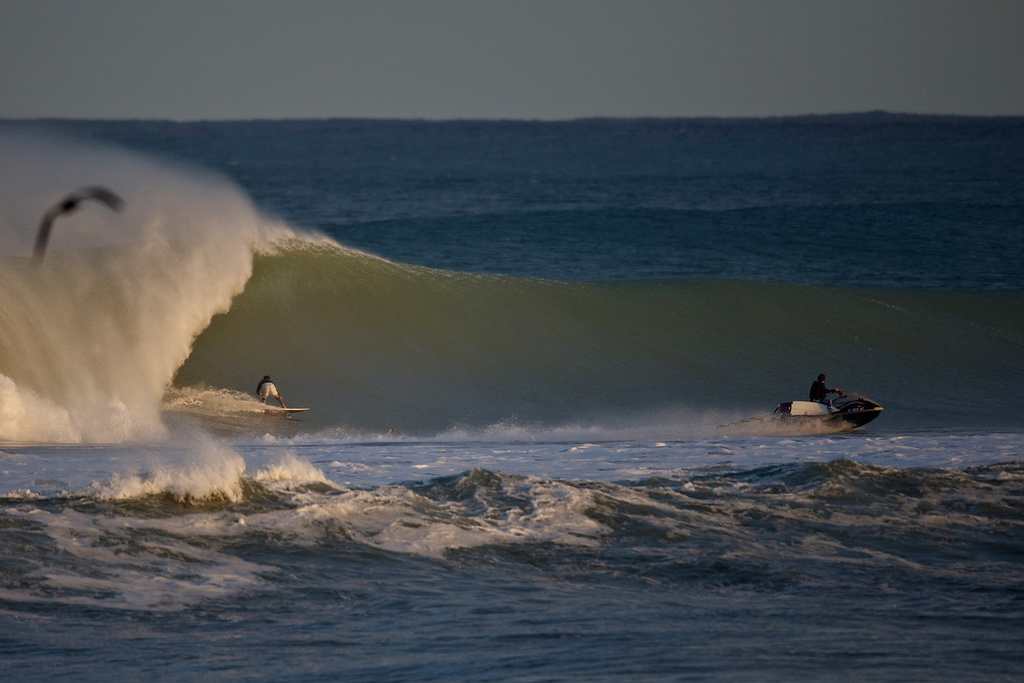
zb: I think that the level of competitive surfing and the training that goes into it—with the Mick, Joel, Kelly, Taj elevating the level of what you need to do prepare for contests—is something that didn’t used to be in the psyche of most people that were looking at professional surfing as a career. And I think that change has crossed over into the free-surfing community now, too. One thing that you guys have done in your magazine that has fallen to the wayside in Surfing, Surfer, Transworld, Surfer’s Journal, and publications like that is contest coverage. You guys have that as a main focus in your publication on an issue-to-issue basis. How do competitions play into the magazine and the culture of East Coast surfing in general?
rm: The amateur surfing thing has been really good for the East Coast.
td: Amateur surfing is really strong on the East Coast. The kids have to use that to get noticed. We wish we had more of the West Coast guys coming out for the Easterns, in Hatteras, to see who’s there. But the kids in the NSSA work their way up on the East Coast, so they can make it to the contests in California.
zb: Are there any kids right now that you have really high hopes for?
td: A couple come to mind. I’ve been talking to people lately and telling them that Caroline Marks will be a world champion.
rm: You heard that here first.
td: She’s eleven years old. Legit. And this little girl can surf. It reminds me of another kid I saw when he was eleven years old, when my friend Matt Kechele told me, “Take a picture of that kid, he’s good,” and that turned out to be Kelly Slater.
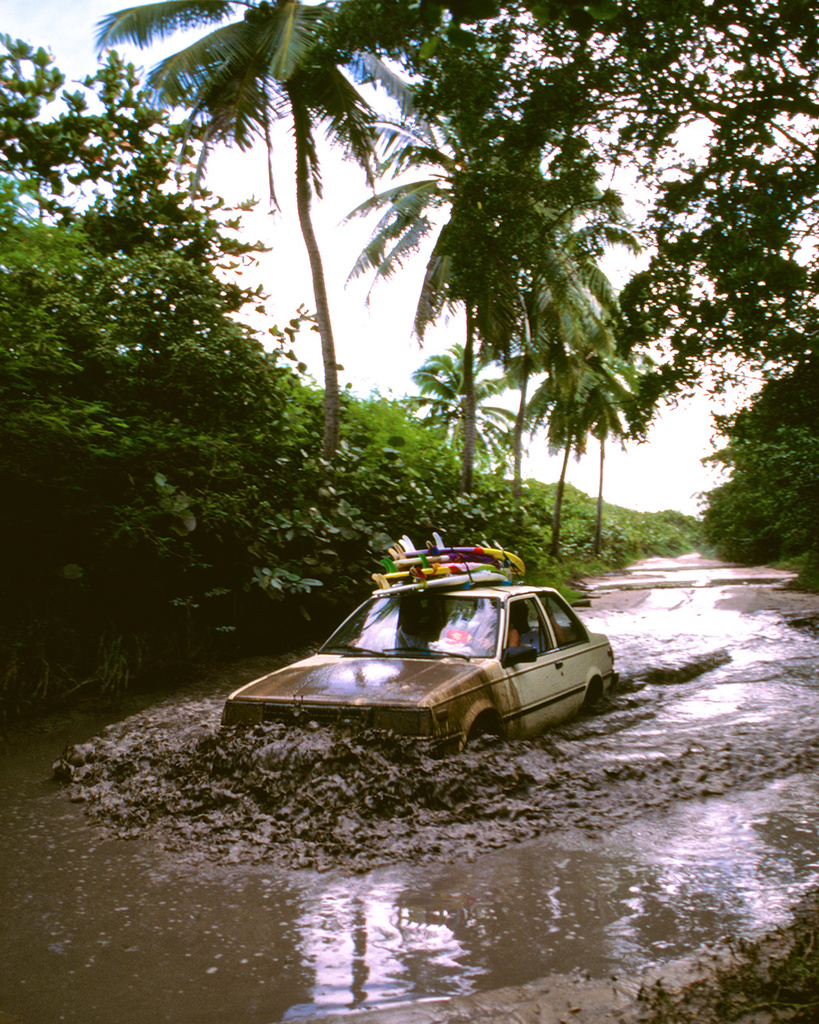
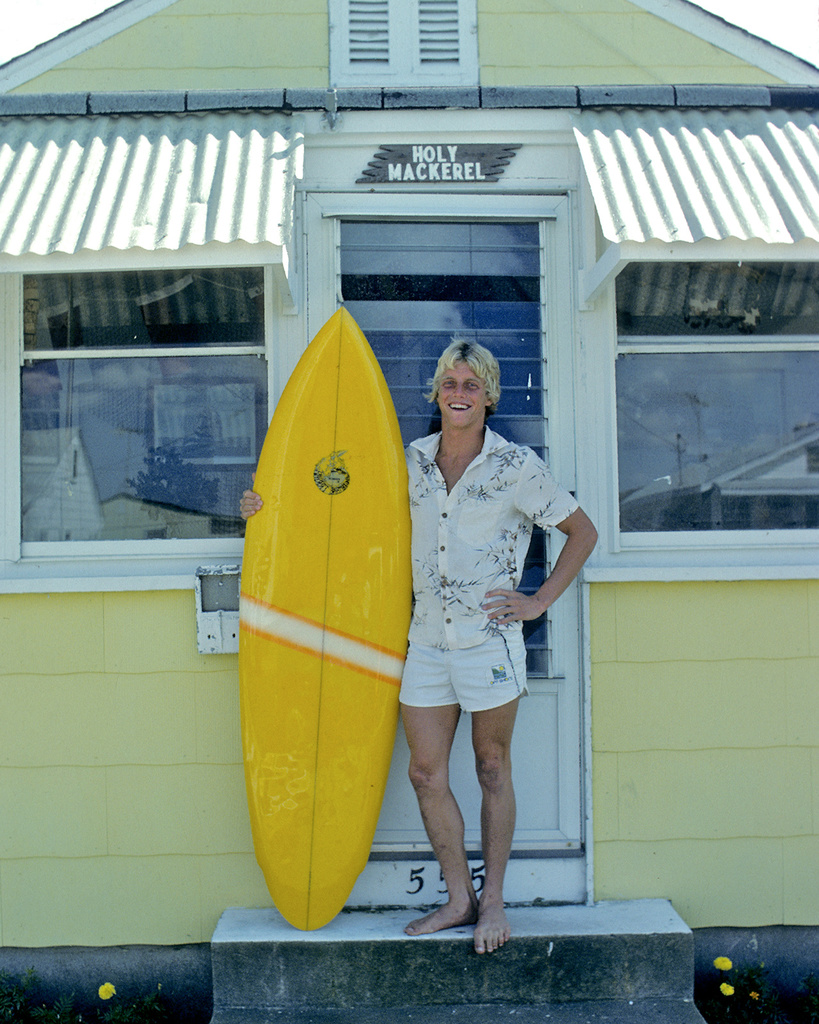
I couldn’t imagine being landlocked and not feeling the fresh ocean air, being there in the morning when you’re with your friends.
zb: We’ve talked a lot about the past, but where do you guys see things going in the surf industry?
rm: I’d say that the amount of good surfers is going to continue to grow. As far as magazines and publishing, I don’t know, man. I don’t think print is going away. I think if you have something of interest to read and you have a niche, then you can definitely survive if you have a good website to back it up.
td: Magazines aren’t going to go away. People still like to hold it in their hands, look at it—have the pictures. I think the industry’s going to get stronger. I think surfing today is stronger than it’s ever been in the advertising industry. It’s everywhere. Everybody wants to learn how to surf, and there are surf camps everywhere. And that’s good; I think it’s good for everyone. I couldn’t imagine growing up with a different type of lifestyle. I couldn’t imagine being landlocked and not feeling the fresh ocean air, being there in the morning when you’re with your friends.
rm: I’ve never lived more than two blocks from the ocean and I can’t ever imagine myself living anywhere else. One thing I’d definitely like to make known is that the reason this magazine has been so successful these past 23 years is that we’ve been so lucky. We’ve lasted so long in the business and we didn’t do this for money. Originally, we needed “jobs,” but it’s been a labor of love.
td: Right now we’re working on issue #176, and it’s still just as exciting. When we finish the issue, when we put it to bed and the cover is done, it’s exciting. Then, when you get it, and it’s in your hands, it’s just as exciting as it was during our very first issue. That’s something that’s never changed. We’re proud of every single issue. ■
